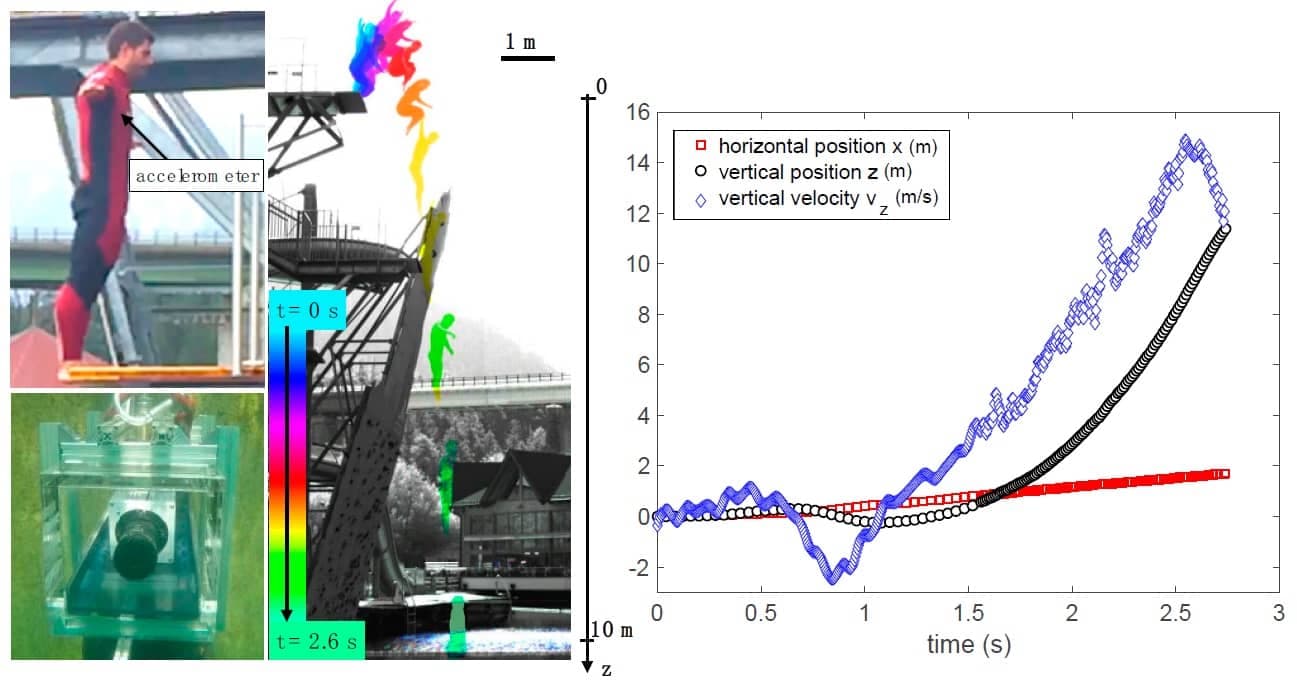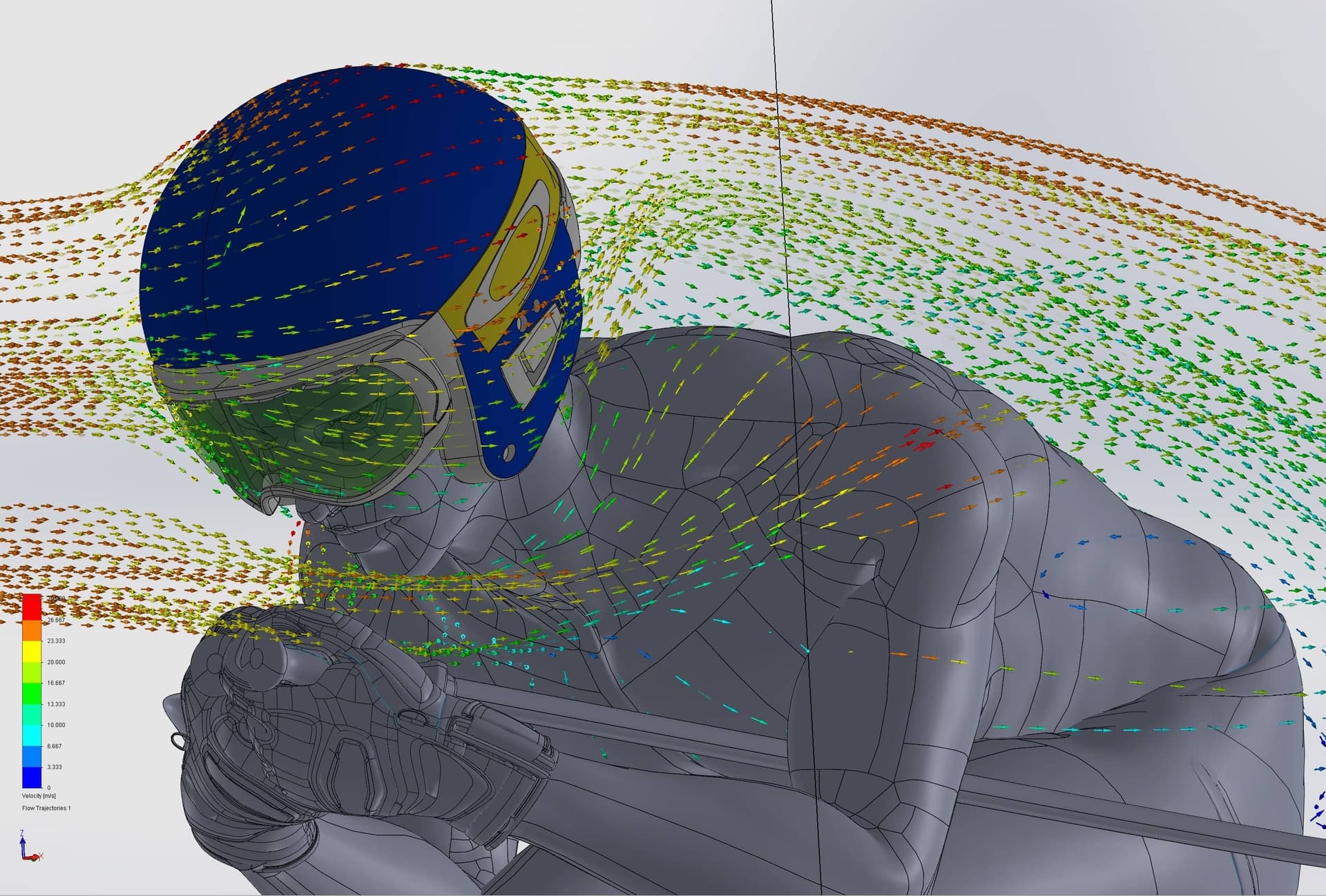📢 Introduction
For this blog, we've had the pleasure of interviewing Per Lundstam, High Performance Manager at Red Bull. The combination of his background as an athlete and remarkable interest in sports technology have put him in a very interesting role!

🎿 From Athlete to Red Bull High Performance Manager
Tell us something about you background and how you got into this industry? Absolutely, my background in the world of sports comes from when I was an athlete, which is where I started my career. This has been the precursor to my hole trajectory. Already as an athlete, I was very interested in what happens behind the scenes of high-level sports, specifically with skiing; what are its characteristics, understanding the underlying forces and all the different aspects, the biology of the sport, what effects does it have on your physiology, essentially the physics behind it all. From a young age I was inclined towards this side of sports, many athletes who are very talented in the sport certainly know what they do but, maybe they don’t have that interest towards a more scientific understanding of what happens. It might be because they simply don’t want to go along that path of understanding the science to a higher degree, they just simply execute the sport, indeed at a very high level.
I had a lot of that interest in understanding more about it, which drove me to go into coaching. I have coached for the Swedish national skiing team for quite a while back in the 90’s, my role being that of a coach in charge of all the physical aspects of the athletes. This led me, in 1994 to join the US skiing team, on the coaching side and thus stay there a long time before I was able to dig in a bit more and eventually join the sport-science team as a bridge between the athletes and the sport-science department.
How rapid or challenging was the transition from being an athlete to coaching and working on the science behind the sport? It was a rapid, consecutive process for me. At that time when I was an athlete, I already did a lot of the training and programming for athletes, so that was like a natural path for me to step in to and take that direction.
⛷ Aerodynamics in Alpine Skiing
Your holistic approach to the sport must have given you a privileged vision. Over the years has there been a change in attitude towards testing and aerodynamics from the athlete’s side? I think it is very sport-specific in how athletes look at their supportive work. You have technical disciplines such as alpine skiing or all the motorsports etc. where it has been understood that aerodynamics are essential to invest in and has a big effect on the outcome and results.
In alpine skiing you can definitely see that the culture has become more aware of the importance of aerodynamics in sports. I feel this has emerged from many of the faces of the sport. When I first started, it wasn’t as critical or relevant at the time, largely since there were so many other developments and holes to focus on that this was left aside. But as the sport has got more sophisticated, there is a true need to understand the aerodynamics behind it, and it currently is on everyone’s radar to develop. This comes along with the fact that more resources have been made available and come along to try and improve those few milliseconds that really make the difference in such high-end competitive sports.
As a general idea, do ski teams outsource their aerodynamics research and development or do they invest in professionals and expertise to solve things in-house? That is a very nice question, for sure it is sometimes outsourced. Mainly experts and groups which are producing the materials and in charge of other areas of research, are the ones who determine what materials and shapes should be involved in and manage the aerodynamic research. I have seen that this development often must be so driven from the core team and treated from the beginning as something being intrinsically linked with other areas of study. Sometimes we have seen that we don’t have coaches or a direct sport-science connection bridging the athletes with the manufactures, in such cases it is very hard to create a product that has a true impact. Therefore, we are working hard to lessen the distance between the community and the groups who actually produce the materials, it is clear that the turnover of the product must emerge in harmony to really validate the effect it has. Projects in the past have been separated and fragmented, always resulting in making progress into something which is not very useful. Therefore, what you mention is an interesting dynamic in our world, we work as a team and face the problem from a holistic approach.
🏊 Hydrodynamics of Diving
Making a move into a different topic, I am aware you have researched into the hydrodynamics of diving, please tell us about this project and why it arose? This project came directly from an athlete, like many other projects here at Red Bull, it was a cliff-diver who was in one of our programmes. To put you into context, these people jump from heights of about 27 meters, as you may imagine the impact and strain on the body is huge. Their velocities reaching 85 or 87 Km/hour when they hit the surface. After working some time with this athlete, we focused on the physical side and notices he was being injured in specific areas; adductors and shoulders.
We started talking about it and he told us that most of his competitors were also having these issues as a result of the high impacts. Their main problem was keeping their feet together and their shoulders perfectly aligned as they entered the water. We realised that it was interesting to see if we could come up with some equipment to assist them to keep their feet together whilst not restricting movement in the air. So that is where this project was born. We tried to figure out how to enter the surface without getting this jerking movement on the legs, which were the main cause of the injuries.
The first phase of the project was essentially recognising the problems and trying to give physical meaning to these issues, focusing on the entry point and changes in velocity. On a second phase we focused on how the body penetrated through the water and modelling the interaction of gas and air fluids and the consequence of formation of air cavities.

🌬 Aerodynamics at Red Bull High Performance
On your programmes, how dos aerodynamic testing come into play? Do you jump in from the start or develop this in parallel with all the other areas of research? It is very important to understand the aerodynamics versus the structural setup, like geometries and so on. We try to see how the athlete may still produce more power. It is always an interesting dynamic between the ability for the athlete to efficiently produce power and the aerodynamic and structural benefits we can obtain.
This happens in all sports but specially in cycling, a given position (which may indeed be very aerodynamic), can compromise athlete performance and thus not yield good results. We have had athletes that just by how their body is structured we may already be in a very nice aerodynamic position and still produce power, thus leading to great results. In the end it comes down to their body and how they can position themselves to produce this power, so it is very interesting to see that some athletes are fortunate enough to do that. In any case, most of our work was been directly tailored to the aerodynamics and testing on wind tunnels. For sure we have work on the road to look at, like how power profiles affect the changes in the position of the athlete.
In terms of the research you do, are you limited to the number of simulations or testing you may do, or do you have complete freedom? From all the different federations and international committees, we do have strong regulations in terms of the material being used. As for the testing part, we are very much free, hence we try hard to push our understanding further by doing testing within those regulations.
🕐 Future Developments in Aerodynamics
Coming back to the world of skiing, what are the future areas of focus from the aerodynamics side? The suit development is probably one of the larger pieces in ski racing where many of the teams and science groups are putting a lot of resources into, trying to break the wind and have materials that don’t let air through. From the ski side, the suits must let though a certain amount of air to fit into regulation norms, coming into game the scenes to visualise the flow and study how to reduce drag. Helmets are something on the eye of development from the least 15 years, even minute things like how goggles fit into the helmets may improve the drag.

Just out of interest, how many people are working on each athlete? It varies, but in most of our projects, as we spoke earlier, we outsource some of the work. From our performance team, we have had companies that come in with 3 or 4 main staff that drive the project and work together with us. Obviously, they may also have external teams that work for them aside, but I would say it is 3 to 4 people that usually come in and help us from our side. So, in general up to 7 or 10 people are working in the larger projects which have more resources.
💡 Conclusion
Please tell us anything else you wish to talk about To sum up, aerodynamic research is a very interesting space and technology is something that is growing all the time in sports. We often see that we, as humans, have physiological limitations, so in the leading sports you start to look at other options and dimensions to go faster or achieve more. In technical sports, we have come a long way by developing and digging in aerodynamic research, putting resources into the technology to achieve a cohesive understanding of all the areas of focus. Undoubtably, there is going to be more and more focus on this side of sports, and awareness will be raised further in this space.
Interesting links:
Speed Skiing at 250 km/h
Winning the Red Bull Air Race
Run your own Simulation
